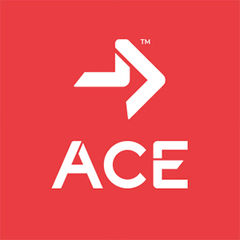The basic exercise recommendation for kids is 60 minutes a day of moderate to vigorous physical activity (MVPA), but is this recommendation enough to prepare our boys and girls for a lifetime of physical activity?
Simply providing kids with MVPA like cycling or walking without teaching them other skills like jumping, skipping, throwing and kicking is like teaching them their ABCs and not showing them how to spell actual words. We set the foundation down, but never build the house! The same is true in fitness. We can’t just show kids how to move without introducing some fundamental skills, as well.
To maximize the likelihood that our youth will continue to thrive in health and fitness for years to come, health professionals have identified integrative fitness training as the best means of getting our kids the most thorough physical fitness program. Integrative fitness training combines health-related skills and skill-related fitness to give kids a well-rounded physical fitness program.
Health-related fitness involves a person’s ability to perform activities that require endurance, strength and flexibility. This kind of fitness is linked to health enhancement and includes the following components: aerobic fitness, muscular strength, local muscular endurance, flexibility and body composition.
Skill-related fitness is required to perform more complex games and movements. The components of skill-related fitness include agility, balance, coordination, speed, power and reaction time.
Although most youth fitness programs focus on health-related fitness components, it’s critical to include the components associated with skill related fitness because motor-skill competence promotes long-term engagement in physical activity. Kids who feel less awkward and have better control of their reaction and coordination become more confident and are more likely to continue participating in activity-based programs.
The following is an example of the different components of health- and skill-related fitness, along with exercises to enhance each component of the integrative fitness-training model.
Health-related Fitness
Aerobic Fitness: Improving the body’s ability to use oxygen more efficiently and strengthen the heart and lungs
Examples: Running, cycling, swimming
Muscular Strength: Increasing the size and quantity of muscle fibers
Examples: Push-ups, crunches, lunges
Muscular Endurance: Improving the ability of muscles to work longer and harder without hitting fatigue. These exercises use muscle groups for an extended period of time.
Examples: Jump rope, hill sprints, boxing, relay races
Flexibility: Improving the length of muscles and the mobility at the joints
Examples: Toe touches, shoulder circles, quadriceps stretch
Body Composition: Improving the ratio of fat mass and lean body mass by keeping fat mass low and lean body mass (muscle and soft tissue) high
Examples: Any form of aerobic exercise, muscular strengthening or muscular endurance will increase lean body mass and decrease fat mass.
Skill-related Fitness
Agility: Improving the ability to change direction and move more quickly through any movement pattern
Practice exercises: Quick steps, Ali shuffle
Balance: Improving body awareness and the ability to balance on both right and left sides
Practice exercises: Single-leg balance touch, single-leg reach forward
Coordination: The ability to do multiple tasks at once and fine tune motor skills to improve timing with movement
Practice exercises: Carioca, jump rope, skipping
Reaction Time: The ability to react to an outside stimulus upon seeing and reacting.
Practice exercises: Tennis ball bounce pass, reaction ball toss, red light/green light drill
Speed: How quickly you can move from point A to B. You must work on gaining more power in the muscles and also work on technique to improve overall speed.
Practice exercises: Sprinting intervals, squat jumps, quick high knees
Power: A combination of strength and speed will generate overall power.
Practice exercises: Box jumps, skater plyos, sled drags or bungee runs




 by
by 







